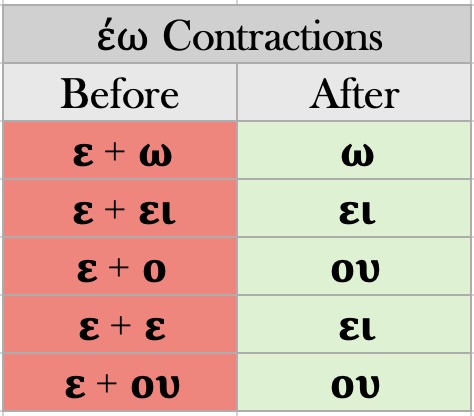17.2 The most common type of contract verbs are those whose verb stems end in –ε. For these verbs, when –ε contracts with a long vowel or diphthong, the long sound simply absorbs the –ε. Otherwise, the contractions are just as we have already learned.
Perhaps the only trick to contract verbs is the accent. There are two steps. First, following the RECESSIVE ACCENT rules, place the accent on the UNCONTRACTED verb form. Second, follow the accent rules that apply to vowel contractions (e.g. ε + ό = ού; έ + ὸ = οῦ). These two steps together determine the final form and placement of the accent for a given verb.
17.3 So, putting it all together, we conjugate an έω verb in the Present, Indicative, Active as follows.
(cf. S 385)
- Read more
-
The fact that contract verbs receive their accent in their uncontracted form indicates that all these verbs were originally pronounced uncontracted by Greek speakers. The contractions discussed in this unit are the result of long and gradual changes in Athenian pronunciation. Importantly, this is not true of all Greek dialects. Homer and Herodotus, for example, leave many forms uncontracted. As a result, learning and understanding both the uncontracted and contracted forms allows not only for better mastery of these verbs in Classical and Koine works but easier recognition of their uncontracted forms in authors who compose in other dialects.




